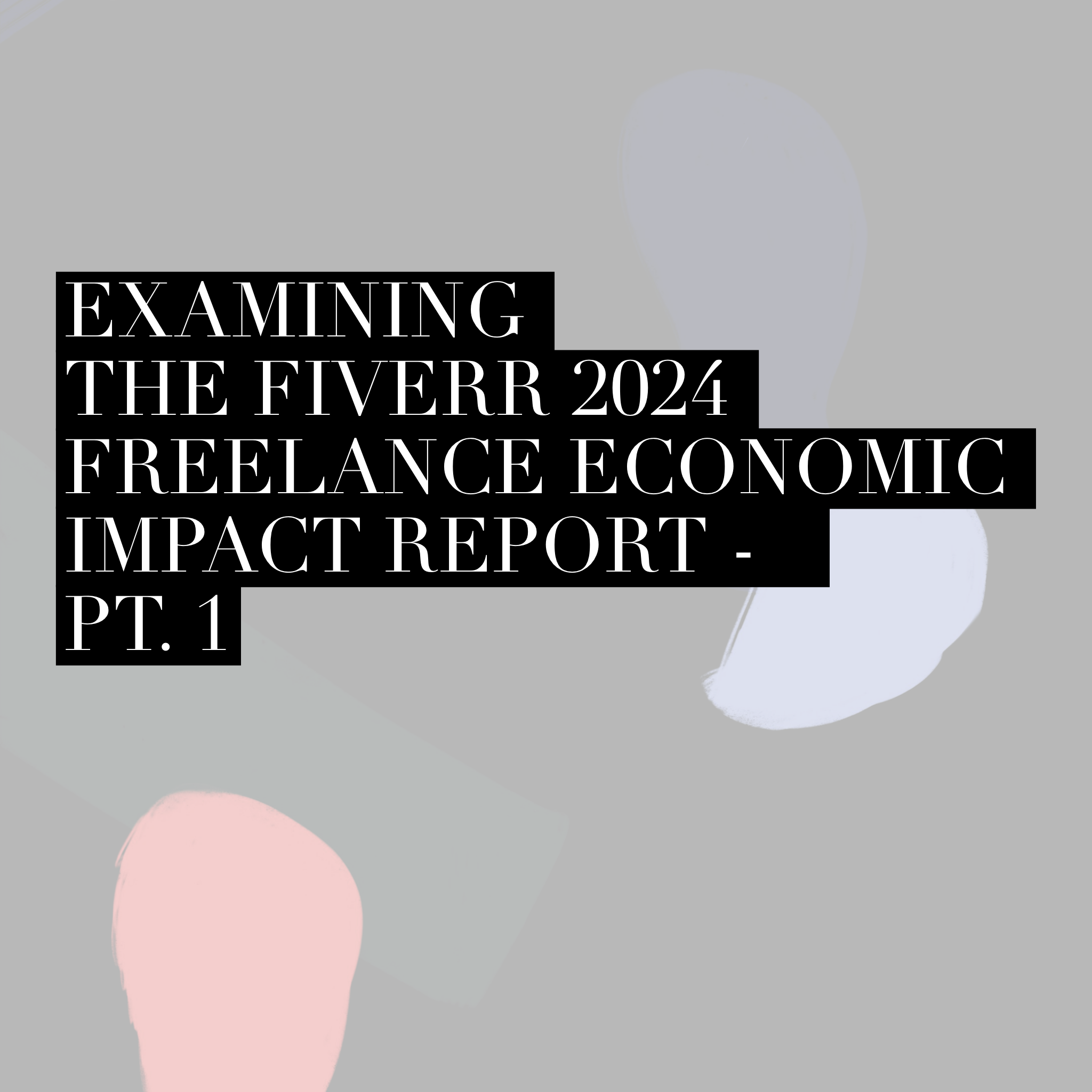
https://www.fiverr.com/freelance-impact
Rather than being just a survey of freelancers on Fiverr, the report (the 7th annual) is in partnership with market research firm Illuminas and based on nearly 30 million tax returns from Non-Employer U.S. Census Bureau statistics drawing out returns from those designated as independent professionals, independent worker or freelancer (note the last complete data was from 2020 so Illuminas has modelled results to estimate for 2024 based on macroeconomic data). This is combined with surveys of 801 Independent Workers from across the U.S. and 601 surveys from active sellers on Fiverr.
While I was initially skeptical of data from Fiverr, I think the breadth of sources counters any anticipated bias that might creep in.
Some key findings and my thoughts on them:
- 38% raised their rates in 2023 and 49% expect to do so in the next six months and 43% increased their revenues in 2023 and 55% expect to earn more in 2024.
It seems that freelancers in the U.S. are doing better than freelancers in the U.K. There are probably two key factors contributing to this: U.S. offered better support to freelancers during the pandemic and the U.S. economy has fared much better post-pandemic.
In contrast, the UK-based YunoJuno Report reported a year-on-year increase in reported freelance day rates of +0.1% in 2023 and -0.8% year-on-year decrease in the length of the average freelance contract booked on their platform. - Independent professionals in creative services make up 20% of this group and they generate nearly 13% of the revenue reported in this survey. Professional services are both the largest number (51%) and generate the most revenue (49% of total revenue).
Creative services as a freelancer don’t generate as much revenue as professional services freelance skills. This is not surprising and reflects the relative differences of pay for employment jobs (rather than freelancing) in creative fields vs professional services where jobs in the latter pay better.
Does this create an opportunity for the freelancer?
The beauty about freelancing is it’s possible to offer a range of services. It’s worth considering if you can offer some professional services skills alongside creative skills. For example, besides doing creative work (graphic design for example) can you also offer what Richard Caves calls ‘humdrum’ skills, which are skills that are necessary for creative skills to exist and thrive – for example account management, procurement, project scoping or project management?
A recent interview I did with a freelance project manager in the UK reported that she is busier than ever, but friends and colleagues in more creative areas (graphic design, art direction, copywriting) were finding work hard to win at the moment and rates depressed. This may be a sign of the increased use of AI which is replacing some of the lower level creative activities previously done by freelancers.
For creative freelancers it is worth looking upstream and downstream (ie., ask what happens before they need your creative skill or after they need your creative skill to determine different inputs around what you are currently providing) where perhaps you could expand the scope of your freelance offerings to provide more professional service type skills alongside your creative freelance skills. This may create additional freelance opportunities and it may help you generate more income. - 75% report high satisfaction with their freelancing work.
This is a great result and consistent with other findings I have seen. It is only freelance sectors where wages are quite depressed that show significant dissatisfaction with freelancing. Compare this with the recent results of The Big Freelancer Report of 2024 (produced by Freelancers Make Theatre Work), which surveys the freelance entertainment workers in the UK, which found that nearly half of 2024 respondents were earning less than the London Living Wage of £13.15 per hour. It is both unsurprising and sad that 64% of these freelancers report they feel ‘quite’ or ‘very insecure’ about their work in the sector (up from 55% the previous two years) and 27% report they are currently considering or planning to leave the sector (up from 16% in 2022).
Freelancing is clearly a broad spectrum – the World Bank reports that 48% of the total global employment is made up of the self-employed (2022 data) so we are talking of a global pool of over 1 billion freelancers. It has to be expected that experiences will vary.
It’s important in talking about freelancers to note how very different the experiences are in different countries, economies and also sectors. But coming back to the Fiverr report, their data points to a high level of satisfaction in freelance work amongst their U.S. respondents. With freelance work estimated to represent 51% of the U.S. workforce by 2027 or 86.5 million people (data here) I hope that high level of satisfaction with freelancing can be sustained.
Look out for pt. 2 for some further analysis of the findings particularly how freelancers view AI.
thanks for info.
Glad it’s useful. Thanks for taking time to comment.